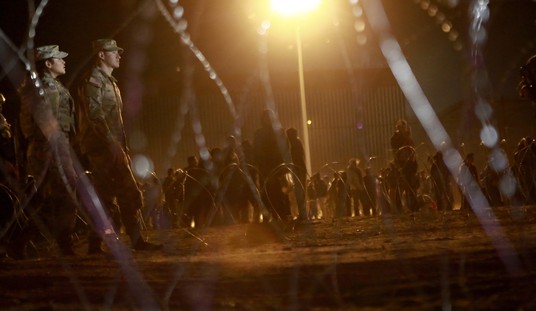As I mention below, Tropical Storm Fay could hit just about anywhere in Florida, at just about any strength. The fact that the official forecast track has Fay making almost a beeline for Tampa Bay does not necessarily mean that that particular scenario will occur.
However, the Tampa/St. Petersburg area is nevertheless worthy of special attention, because it is the most vulnerable spot on Florida’s west coast — and one of the most vulnerable places in the whole country — in terms of potential storm surge devastation.
Ask any disaster preparedness expert (or amateur hurricane enthusiast, like me) to name the major metro areas most vulnerable to severe damage in the event of a hurricane strike, and Tampa-St. Pete will invariably be on the short list, along with New Orleans, Miami, Houston/Galveston, and NYC/Long Island. Any time one of these places is a plausible landfall target for an active storm, it’s cause for concern.
Why Tampa? Because the shape of Tampa Bay, combined with the shallowness of the Gulf of Mexico offshore, can create a “funnel” effect, enhancing the storm surge as the hurricane makes landfall, as this 1992 article explains. If a strong enough storm took the worst-case track, you could end up with 20+ feet of water submerging downtown Tampa, creating scenes like this Tampa Tribune simulation:
To make matters worse, Tampa has not suffered a direct hit from a hurricane since 1921, so there’s a lot of new coastal development that has never been tested by such an event. Moreover, because it’s been so long, residents don’t have first-hand experience with landfalling hurricanes — but they may think they do, having experienced peripheral effects of recent hurricanes that threatened Tampa and ultimately hit nearby (e.g., 2004’s Charley), and thus they may be both inexperienced and overconfident. Needless to say, that’s the worst combination imaginable.
If a storm were to approach Tampa Bay, much would depend on its exact path. Fay’s current forecast track, if precisely borne out, would actually just barely spare Tampa the worst-case scenario (even if Fay were to get stronger than currently forecast, and become a major hurricane), because the track has Fay’s eye hitting just south of the bay. That would keep the storm’s right-front quadrant — which has the worst storm surge by far — away from the bay, preventing the worst-case, massive funnel effect.
Far worse would be a landfall just north of Tampa, as this would bring the strongest onshore winds directly into the bay. I’ve crudely illustrated the distinction by adding a hypothetical “worst-case” red line, next to the NHC’s current forecast track:

As the computer models shift this way and that over the next 48 hours, let’s all cross our fingers that nothing like that red line emerges as Fay’s likely track. Virtually any other scenario would be preferable to that.
For a closer look at what a true worst-case scenario — a Category 4 or 5 hurricane flooding Tampa Bay — would do, check out the Tampa Tribune‘s 2006 special report, “Tampa Bay Worst Case Scenario“; the St. Petersburg Times‘s 2005 article, “Category 4 could leave Tampa area devastated“; and the Palm Peach Post‘s 2006 article, “Could Tampa Bay be the next New Orleans?“









Join the conversation as a VIP Member